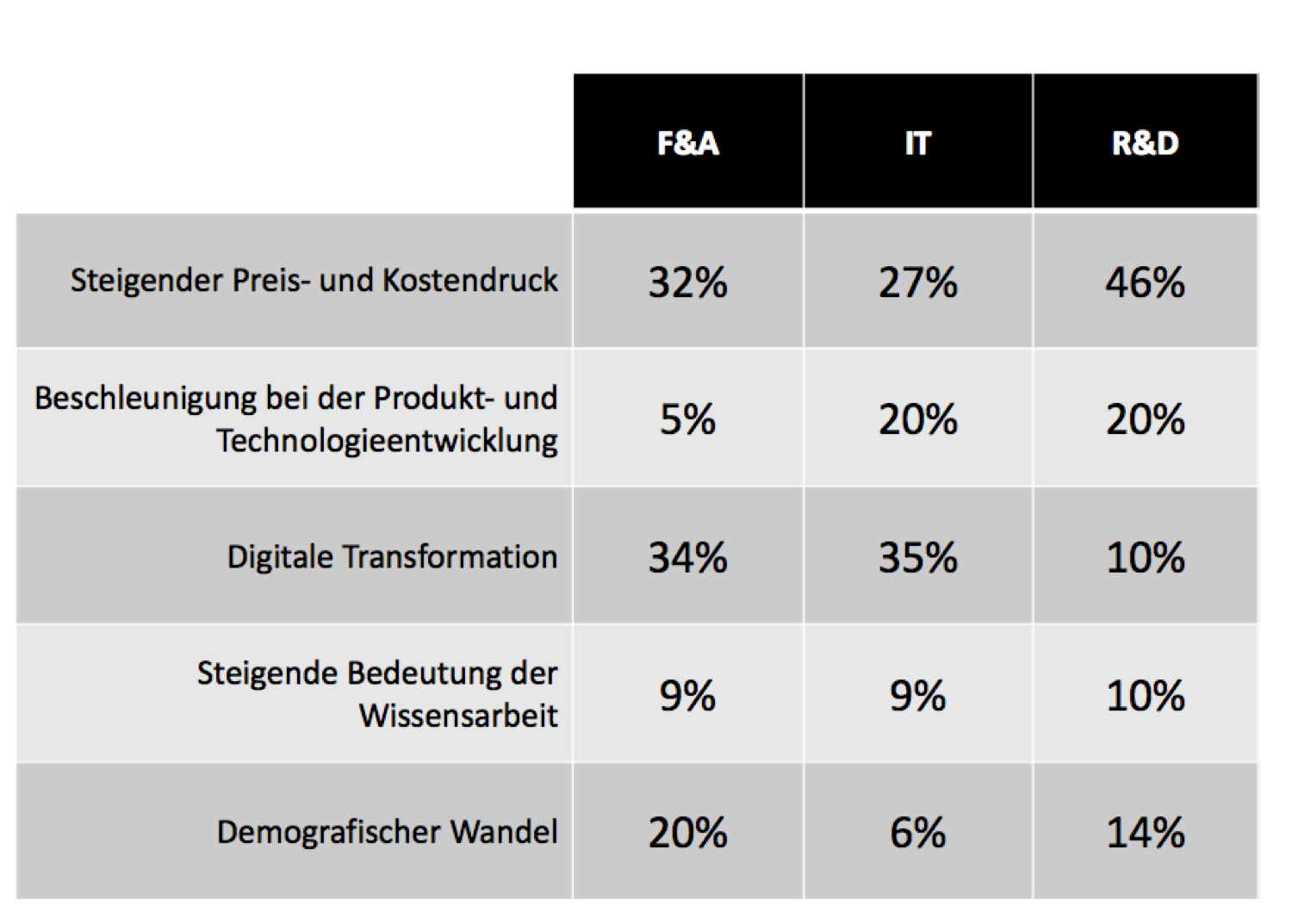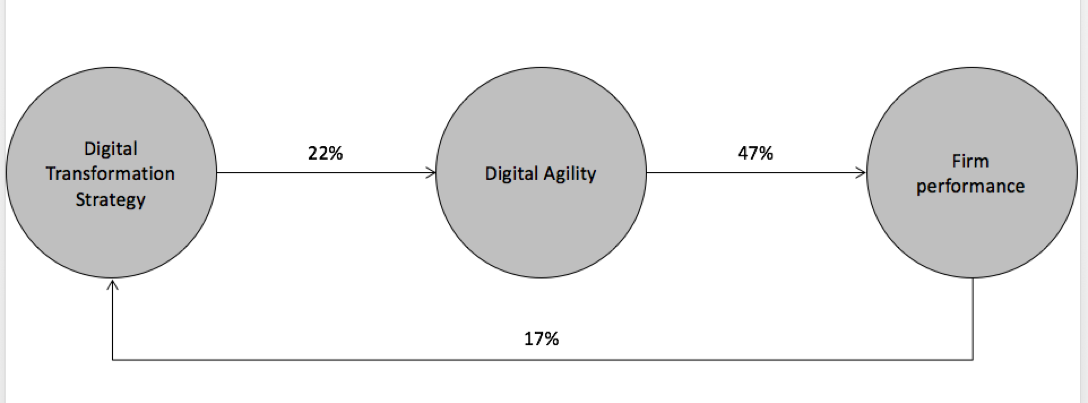Agility as a strategic and organizational principle is increasingly understood in the digitalized world as a success factor for companies of all types and sizes Innosabi’s blog . The agile way of thinking and acting, which is a matter of course for young startups, often develops in the opposite direction with increasing maturity and size of a company: flexibility becomes rigidity, speed is lost and planning replaces action.
The digital change
Competitive pressure is increasing in every industry. More and more new companies are entering the market, bursting with new ideas regarding the customer experience. Due to changing customer needs, digital change comes first. This is also shown by the figure that in addition to price and cost pressure, digital transformation is at the top of the list.

The example of Kodak or Apple shows that digital change is fundamentally linked to corporate success. Kodak has had to painfully experience the digital change in customer requirements towards the immediate availability of photos. By digitizing the music industry (iTunes), Apple has responded to the desire to have music available anytime, anywhere.
“We are challenged to deliver faster and more cost-effectively and to support innovations.” (CEO in the study by Hays).
An answer to this quote from the study could therefore be a new method or approach to this digital change. But what does this digital agility actually mean? Neither Google nor academic journals have given me a clear explanation at the moment.
The digital agility or digital agility
According to a study by Hays, agile methods are particularly important in digital projects. 40% of the projects are already agile and also a Detecon study that I did in a Article on digital transformation presented confirms these results. It turns out that the digital change is blocked mainly by “silo and competitive thinking” of departments. According to the study by Hays, this is still about to be blocked by employees or lack of time due to day-to-day business.

One solution could be what is known as digital agility or, as shown in the figure, digital agility. According to the diagram, this has a very decisive influence on the company and the success of the digital transformation. However, this study is still ongoing and I am looking forward to the results. According to the study by Innosabi, companies want to be “fast, more flexible and more innovative”. The complexity of the requirements increases significantly. One Article on this complexity is already here in the blog. In the course of this I did not find a definition and therefore use the content of my blog. Digital agility not only stands for the principles of Scrum but also has the following sub-areas:
- New digital and agile leadership of Generation Y
- Participation and self-organization
- Digital change as a strategy
- Complexity Methods in Management
Using these methods, the complexity of the digital transformation can be reduced. For each individual point there is an extra article in the blog, which explains the best practices in detail. Of course, this does not cover all points of the digital transformation, but at least some points could be taken into account. Also note me other book suggestions for the digital transformation.
[werbung] Verwendete Quellen anzeigen
https://www.hays.de/documents/10192/118775/Hays-Studie-Von+starren+Prozessen+zu+agilen+Projekten-2015.pdf



